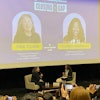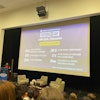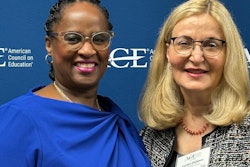Dr. Cinthia Satornino came to academia after a varied career in the nonprofit and business world.
As she puts it, she took a “very scenic route,” during her undergraduate career. “I started out as an aerospace engineer and ended up as a liberal studies major 11 years later,” she says.
Satornino is currently an assistant professor of marketing in the D’Amore-McKim School of Marketing at Northeastern University and has already had what would qualify as several careers’ worth of experience for most people.
Early in her academic career, Satornino left her undergraduate program at the University of Central Florida to work as a financial adviser in downtown Orlando. She noticed that middle school students from both the low-income and tony sides of town converged at one school. After school, many would loiter about, evidently with nowhere to go.
There were after-school programs for elementary and high school students, but nothing for the middle schoolers, a situation that Satornino felt compelled to fix.
“I decided I would start a nonprofit that taught them principles of math and science through art and graphic design,” Satornino says. She founded a nonprofit to develop art programs for middle schoolers and set about fundraising for the program, pleasantly surprised to see that her idea gained traction among financial backers.
But it was soon apparent that Satornino needed to learn the administrative side of running a nonprofit.
When one prospective donor offered her a building to house classes and an art space, she realized that she might be in over her head. “I was 23 and did not know anything about running a nonprofit,” Satornino says. So she quit her financial advising job and took on a position as a data entry clerk at a university foundation.
“I was determined to learn the nonprofit world from the ground up,” Satornino explains.
Within five years, she was second in command for data at the foundation. Realizing, though, that the most efficient way to help those in need was to work through existing nonprofits, Satornino returned to school to complete her undergraduate degree and earn an MBA.
While her career may be varied, there is one common thread running through all of it. “I had always worked with data, but I never thought of myself as a marketing person,” Satornino says. “Then I realized that I had been doing marketing all along.”
Although she entertained the idea of going on to earn a doctorate after wrapping up her MBA, it was not until she came in contact with the PhD Project that she really began looking into the possibility in earnest. The PhD Project is an organization that recruits minority business professionals into academia and the corporate world.
By Satornino’s telling, joining the PhD Project also put her closer in touch with her Hispanic roots. She was born in Argentina to a Hispanic American mother and an Italian father, but immigrated to Orlando as a child. Growing up in America, her mother always reinforced the Italian side of her heritage, believing it would help her children be more accepted and successful.
“It was only as an adult that I came back to really realizing that this was an important part of me and an important part of my identity that I need to reconnect with,” Satornino says. “Only then did I fully become aware, when I started embracing this identity, of how widespread and rampant discrimination is out there.”
Satornino, along with co-chair Dr. Rebecca Perren of California State University, San Marcos, now leads the PhD Project Committee on Hispanic Excellence, as part of the White House Initiative on Educational Excellence for Hispanics. The committee seeks to mobilize more Hispanic faculty to act as mentors to Hispanic American students.
“We have put so much work in putting Hispanic Americans at the front of the classroom that now it’s about mobilizing,” says Satornino. “It’s about finally closing the loop and fulfilling the vision and the mission.”



















